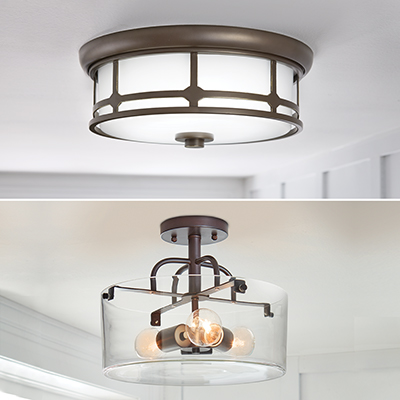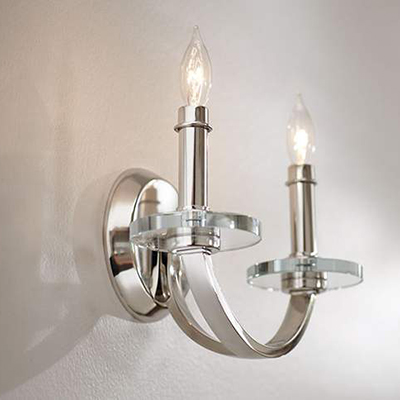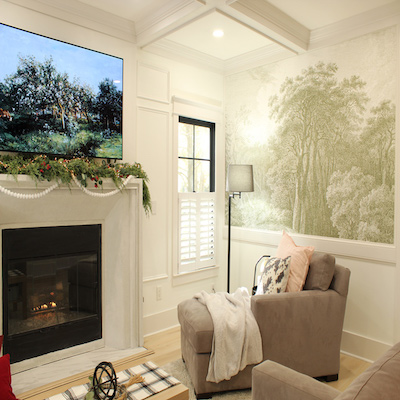How to Mount a Flat Screen TV on a Wall

Last updated August 28, 2024
Wall-mounted TVs are a great way to make your living spaces more welcoming. Knowing how to mount a TV to the wall will elevate your TV and save floor space. A wall-mounted TV gives a refined look to almost any room. Use this guide to learn how to install TV mounts at the right height on your wall.
Difficulty:
Beginner
Duration:
Under 2 hours
Table of Contents
Choosing a TV Mount
Choose Location and Height
Locate Studs
Mark Pilot Holes
Position the Wall Mount
Attach the Mount to the Wall
Choosing a TV Mount
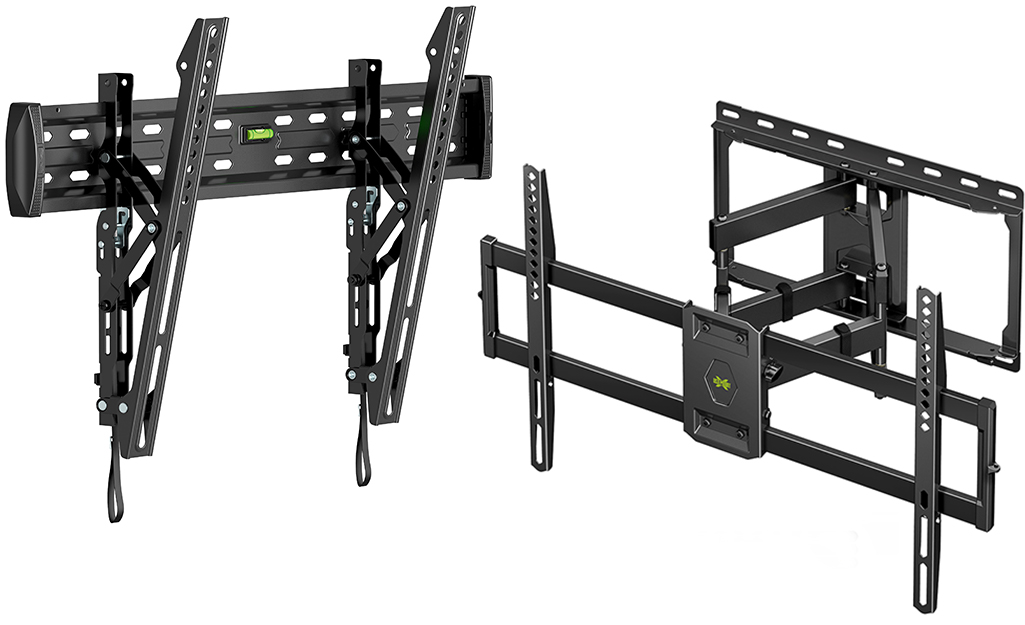
The first step in learning how to mount a TV is choosing a wall mount. There are different types of TV wall mounts.
- Fixed TV wall mounts keep the television in a stationary position, flush against the wall.
- Swivel TV wall mounts allow the screen to pivot to the left and to the right to accommodate viewing from within a room.
- Tilting TV wall mounts gives you the ability to angle the screen down for better viewing when installed higher on a wall.
- Full-motion TV wall mounts allow you to manually adjust the television right, left, up and down for a custom angle. Some models have a telescoping arm, which can be useful when mounting a TV on the wall in a corner location.
There are size and weight limits for mounting hardware. Be sure to check the product specifications and confirm that your television is compatible with the mounting brackets.
Choose Location and Height
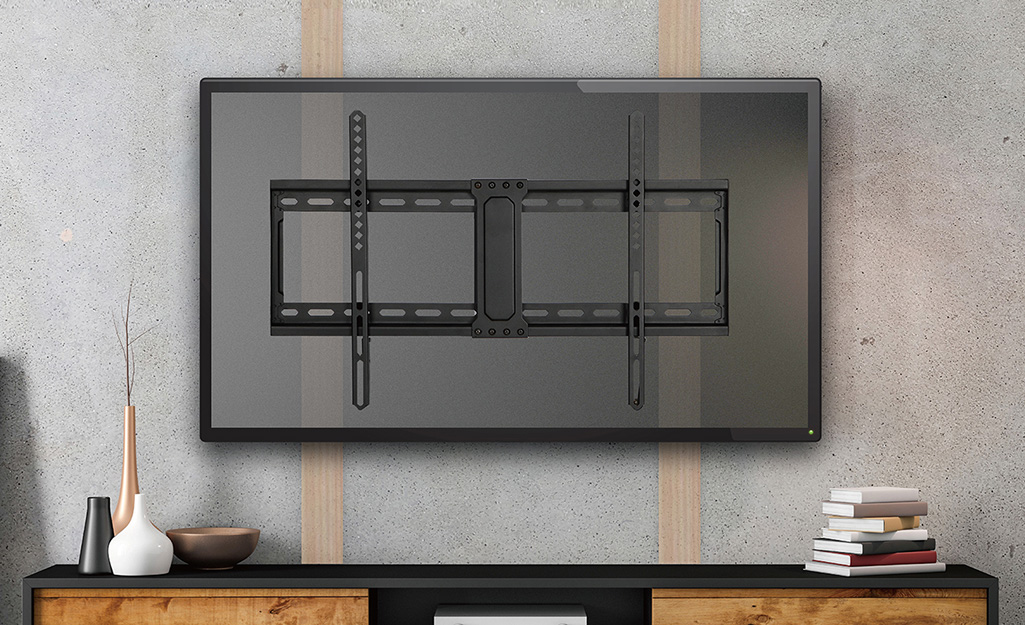
Mounting a TV on the wall requires a little bit of planning. Save time and reduce stress by thinking ahead before drilling holes in your wall. Start by thinking about where you want to put your TV.
- Select a place with easy access to power outlets, cable input sources and connections for speakers and accessories.
- Determine where components such as cable boxes, gaming consoles and DVD players will be placed.
- Consider installing a shelf beneath the mounted TV to hold essential equipment.
- Avoid direct sunlight, heat and vibrations, and do not place in direct flow of traffic.
- Select a weight-bearing wall. The wall must be able to safely support four times the combined load of the equipment and all attached hardware and components.
How high a TV should be mounted on the wall is a question most TV-watching DIYers have. Many feel that nothing else is more important when figuring out how to mount a TV.
The optimal viewing height is to center the display at eye level when seated. Many people consider this to be too low for a wall mount. Rather, they follow this guideline:
- Position the bottom of the display no higher than eye level when seated.
- The top of the display should be no higher than eye level when standing.
Anything within these limits should normally provide a comfortable viewing experience.
Next, do a test to find the right mount height and viewing height:
- Cut out a sheet of paper or cardboard the approximate size of your TV and hang it on the wall in your desired location.
- Affix to the wall with painter’s tape.
- Test out that location from different locations around the room. Make sure it is centered and isn’t positioned so high that it strains your neck when you look at it.
Locate Studs
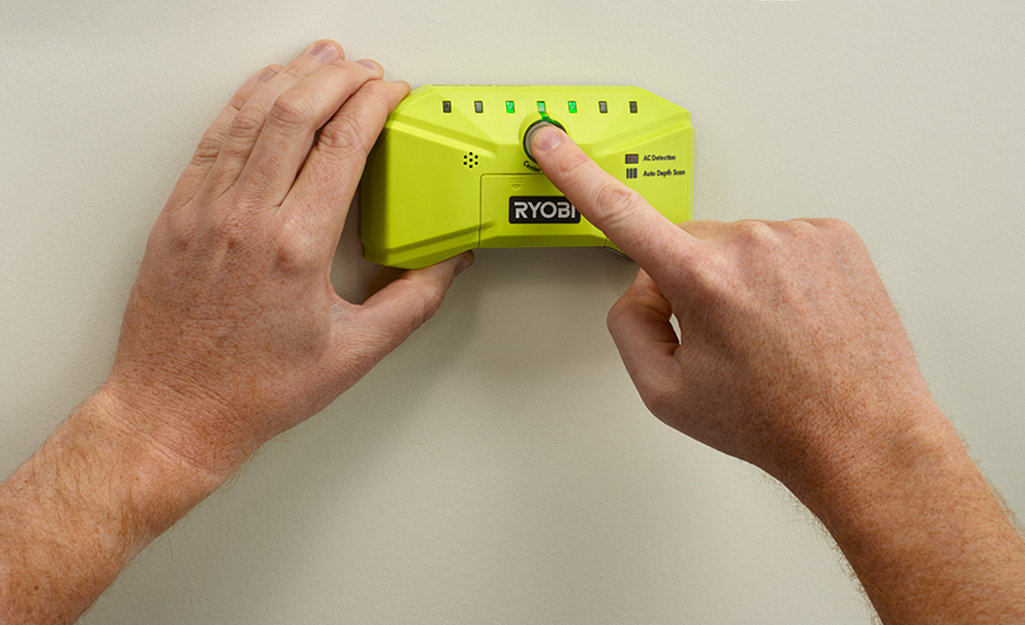
You must screw into studs when mounting a TV on the wall. Do not use hollow-wall anchors, as they cannot support the weight of TV wall mount brackets and the television.
- Once you’ve picked an ideal location for hanging a TV on the wall, run a stud finder along the top of the paper.
- Locate the two studs in your wall that will support your TV.
(Some models are fastened to only one stud.) - Mark the location of each stud’s center with a pencil. Use a nail to confirm a stud has been located.
Tip: If mounting a TV to a wall made of brick, you won’t need to find studs. Instead, use masonry anchors when fastening the mount to the wall.
Mark Pilot Holes
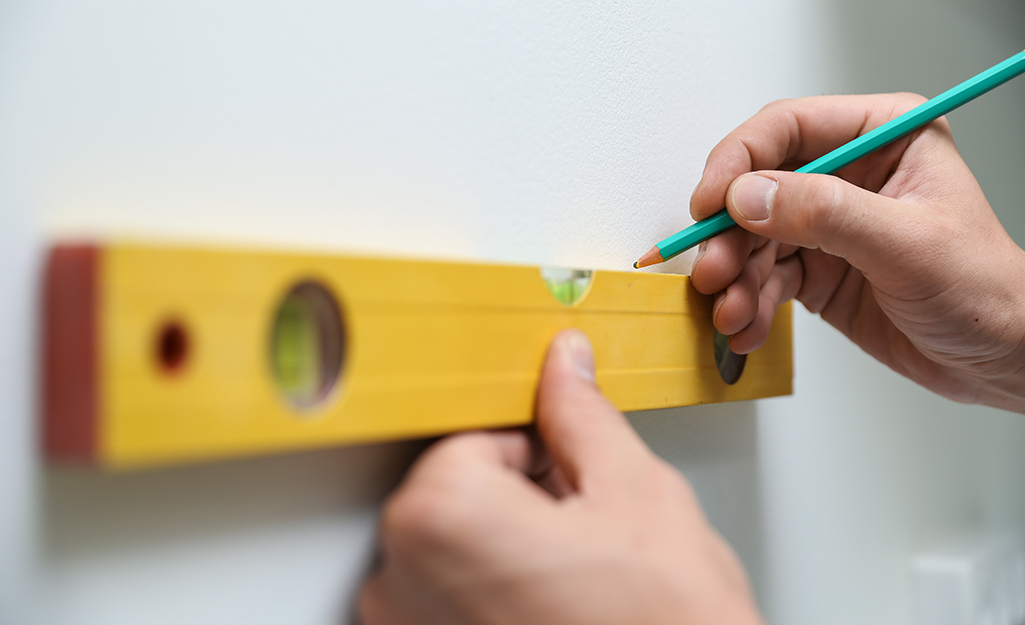
- Mark lightly in pencil where the corners of the TV will be, then remove the paper.
- Measure the distance between the top and bottom holes on each TV mounting arm. Mark two points in the center of each wall stud, corresponding to these holes.
- Use a level to ensure the mounting holes for each arm are even.
Position the Wall Mount
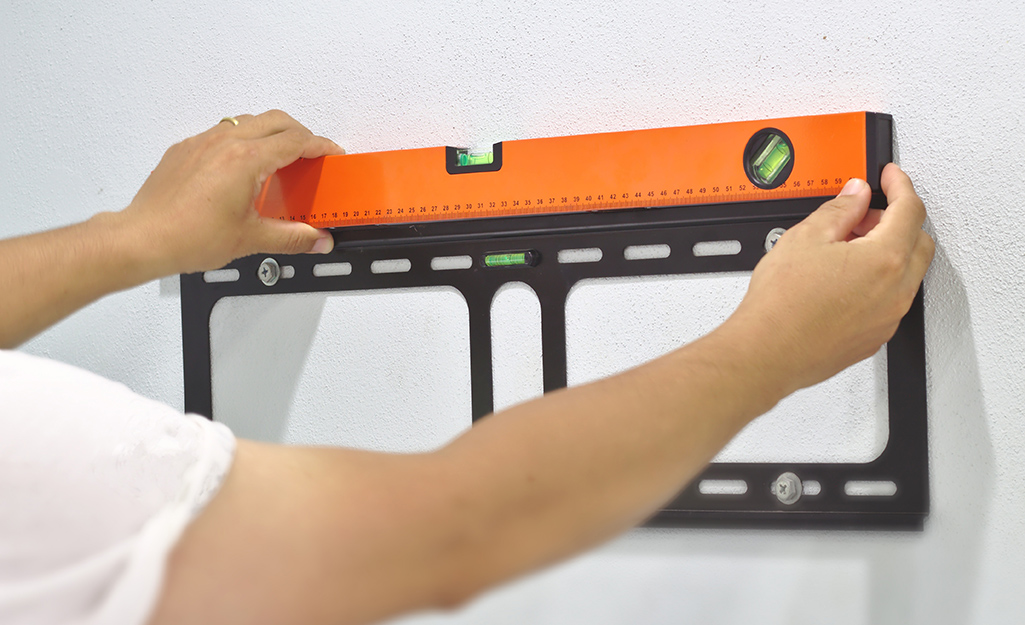
- Hold the flat screen wall mount or TV mount brackets up against the wall, and use a level to make sure it’s even.
- Use a friend to help you hold the wall mount.
- Use a drill to make pilot holes into studs along where you’ve made the marks for mounting.
Tip: Remember the old adage, “Mark twice. Cut once.” That same rule applies to drilling in walls. Check that the mounting holes are level twice before drilling.
Attach the Mount to the Wall
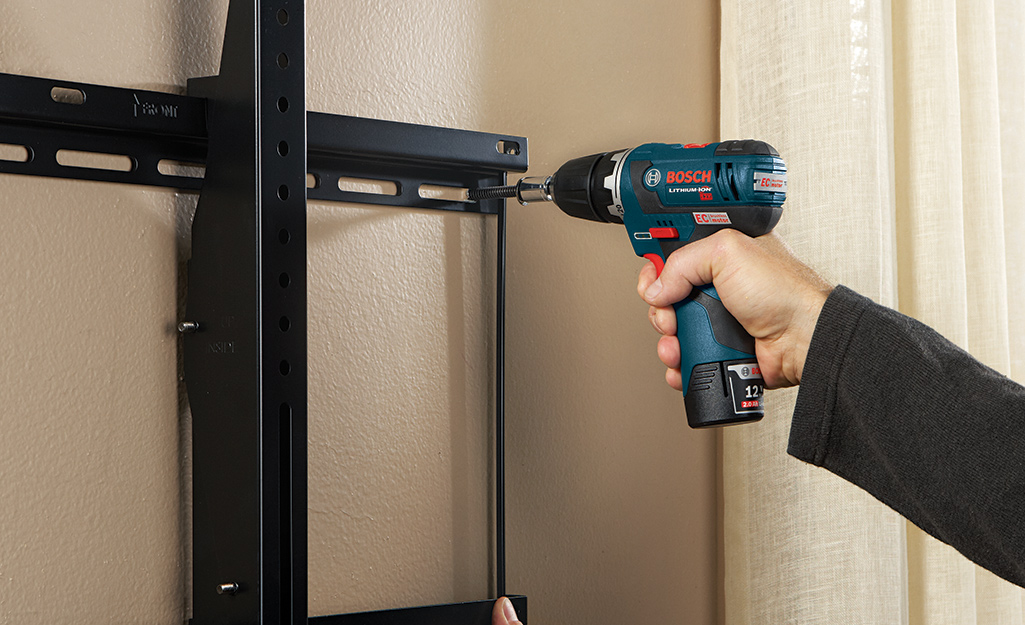
- Have a friend hold the mount against the wall where you’ve drilled the pilot holes.
- Using a drill, drive the screws to attach the mount to the wall.
- Check again that it’s level once mounted.
Tip: Drive in each screw halfway and check that they are level before fully tightening all of them.
Attach the Mounting Plate to the TV
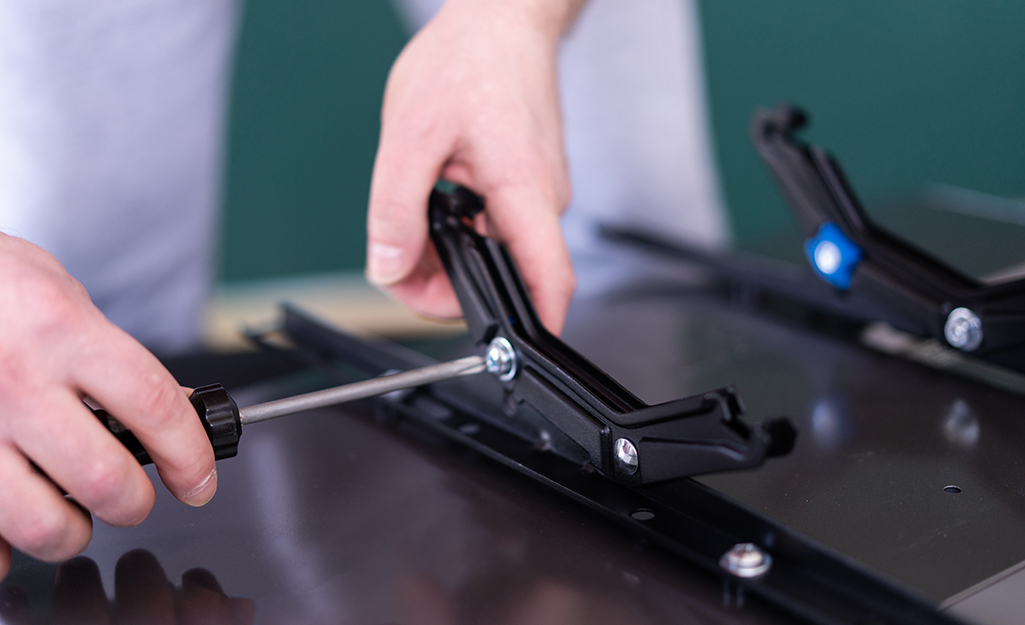
Knowing how to put the mount onto the back of your TV depends on the type of mount.
For example, full motion TV wall mounts may require different steps than other styles. It’s best to follow the manufacturer’s instructions when attaching the mounting plate to the back of your TV.
Mount TV to the Wall

A TV can be as heavy and very fragile. Depending on the size of your TV and where you’re hanging it, get enough help to do this step safely. Make sure you follow your TV’s specific manufacturer’s instructions for mounting to the wall.
- Double-check that the connection between the wall plate and TV plate is secure.
- Use a cord cover to hide the cables dangling from the bottom of the TV if they aren't installed behind the wall.
Knowing how to hang a TV isn’t complicated with the right materials and tools. Decide on which mount works best for you. Figure out where you want your new TV and the optimum viewing height. Install your mount and make sure its level. Hang your TV. Ready to find what you need for your project in your local store? Use The Home Depot app to locate products and check inventory. We'll take you to the exact aisle and bay.
